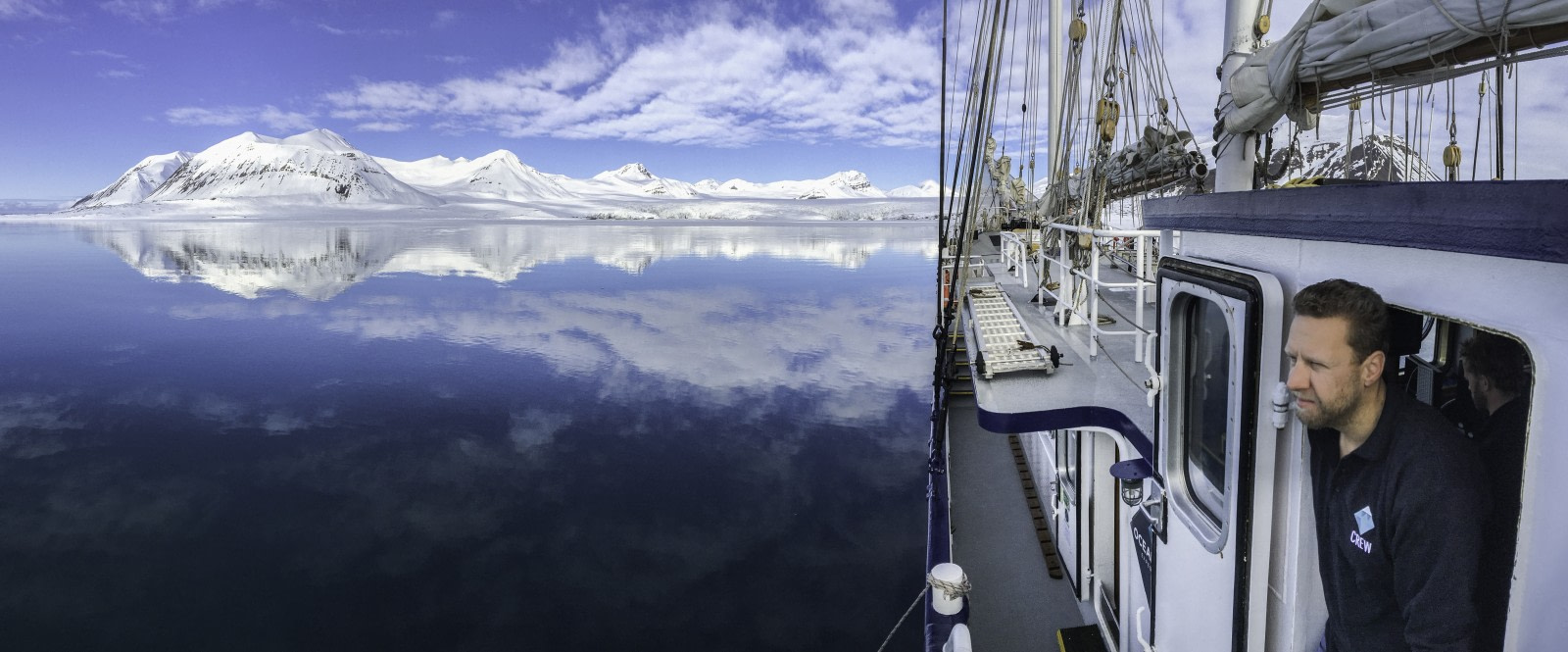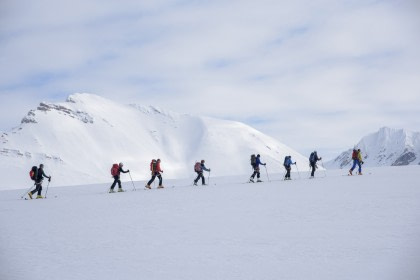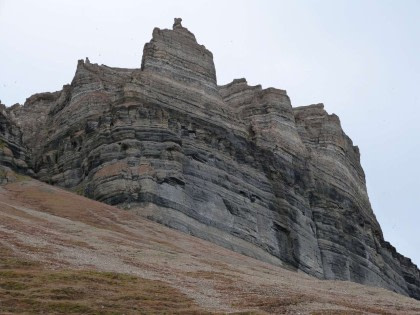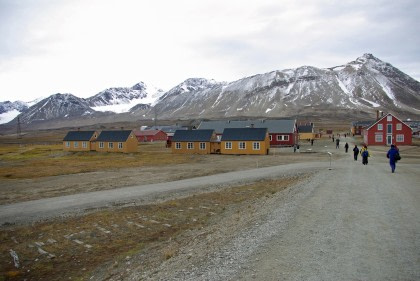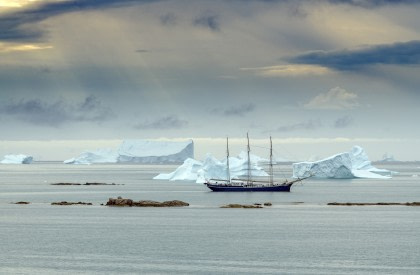Some people travel to the Arctic for the polar bears and seabirds, others for all those ice-spackled bays and peaks dusted with snow no hand will ever touch.
And still other travelers make the long road to the Arctic to inhabit, if only for a week or two, the extraordinary lives of the historic explorers whose names have become veritable synonyms for bravery, determination, and plain gritty toughness.
For tourist-adventurers of this sort, it’s hard to beat the traditional schooner for its creaky, close-contact ruggedness.

In fact, despite the comforts of the larger vessels, there are some people who think small-scale schooners are the best way to experience the pristine majesty of the polar regions.
One such person is Sven Holzhausen, captain of our historic vessel, Rembrandt van Rijn, which makes voyages all along the snow-coated, aurora-lit coastlines of Spitsbergen and Northern Norway.
We spent some time talking with Holzhausen to find out, among other things, what attracts him to the polar rope and sail.
Yours is a very historically rich profession. How’d you start out in it?
I began as a deckhand on a sailing barge in the Netherlands when I was 22, and since then I was sold to sailing vessels.
I sailed on different kinds of vessels to get experience, and after a couple of years I started to sail as a skipper on a small charter vessel, like I did in Holland. I quickly got the opportunity to sail bigger vessels and different waters, like the North Sea and Baltic Sea.
And in walks Oceanwide Expeditions…
Yes, when I heard Oceanwide was looking for a chief officer for their Rembrandt van Rijn vessel in West Greenland, I didn’t hesitate a second, and I got the job.
So the saying “fortune favors the bold” is just as true in the world of sailing.
If not more! After three months of sailing, I got the offer to take over as captain. That was in 2012. I’ve been sailing the Rembrandt ever since.

What an ascent! What are your favorite areas to sail in the Arctic?
I like the wildlife in Spitsbergen a lot. It’s very unique to have all kinds of animals so concentrated in a small spot, and it’s fantastic to be able to offer our guests this variety.
Greenland is amazing too, especially because of its long Inuit history. Scoresbysund and the whole east coast is pure and really wild.
West Greenland has more settlements, but Disco Bay and the Jakobshavn Glacier, close to Ilulissat, are also exciting.
But if you had to narrow it down to one?
It’s hard to say. The variety of landscapes and atmospheres in the Arctic is astonishing.
It’s an unfair question, we know. How about sailing a schooner as opposed to the larger motorized vessels – are there any advantages to the former?
With Rembrandt we’re able to enter places an M/V is just not able to go, purely due to its size.
Also, a masted schooner is of course reminiscent of the Age of Exploration, so to be able to sail one of these in the Arctic is a dream!

What’s a typical day like in this dream job?
A typical day for me is starting my watch at eight o’ clock, then having a short briefing with the expedition leader regarding the day’s itinerary.
Often we’re approaching a landing, or depending on wind and weather conditions, we are having a look at the planning and time scheme.
Experience is very helpful when it comes to estimating all the obstacles we encounter, like ice and strong winds in the fjords.
What unexpected experiences have you had while sailing the polar regions?
In Disco Bay, West Greenland, we had a charter with a famous photographer. We came from Uummannaq Fjord, and on our way back to the south we encountered gale force winds in Vai Gat, which means “Wind Gate.”
The weather forecast gave 2 BF but we had 8 Bf in gust 10Bf.
That’s bad, right?
Pretty bad. So bad, actually, that we didn’t make any progress for hours, and we had to wait till the next morning. It was still blowing even then, and we were not sure if we could make it back in time to Aasiaat.
A day later the wind dropped, but we weren’t in time to catch the plane back, so we organized water taxis to bring the passengers directly to Ilulissat.
Good save.
It’s just part of the job out here. We can’t control the weather, but we do what we can to make up for it when the weather doesn’t cooperate.
How would you compare sailing in the Arctic, then, to sailing anywhere else?
Sailing in the Arctic is hard to compare to other regions, because they’re so different in all ways.
Also, ninety-nine percent of the Arctic is poorly charted, the ice is changing continuously, and the weather conditions themselves are very demanding.
Is that the toughest part of your job, the ice and weather conditions?
Well, it’s always tough to find the first polar bear. Even though we’re very clear that we can’t promise a sighting, guests always expect to see one.
And the most enjoyable part of your work?
Even though it’s our job to sail here, you have to be infected with the polar virus to really love it time and time again.

If you have that, the whole composition of the landscape, the ice, and the wildlife is so enjoyable to experience in the cold, fresh air.
Sounds pretty decent, to say the least. Is there anything better?
Yes. Everything I just mentioned, plus a good cup of coffee.
